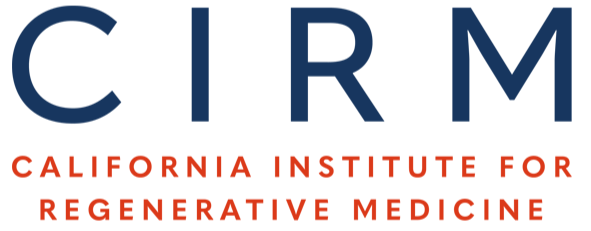CIRM
UCI - CIRM SRL Program
California Institute for Regenerative Medicine (CIRM) Shared Resources Laboratory (SRL) Program to offer essential technologies and training for the development of novel human stem cell-based modeling to stem cell researchers across California
About CIRM
The mission of the California Institute for Regenerative Medicine (CIRM) is to accelerate world class science to deliver transformative regenerative medicine treatments in an equitable manner to a diverse California and world. CIRM is committed to tackling these challenges by creating a diverse and dedicated workforce that can meet the technical demands of translating novel treatment paradigms to reality, while engendering the necessary appreciation for and sensitivity to the perspectives and participation of communities that have been historically under-represented in the biomedical sciences.
About the UCI CIRM SRL Program
The UC Irvine Sue & Bill Gross Stem Cell Research Center (SCRC) has developed a Shared Resources Laboratory (SRL) to offer essential technologies and training for the development of novel human stem cell-based modeling. In addition to providing access to cutting-edge technologies and training for stem cell researchers at UC Irvine, these vital tools and training opportunities will be offered to the broader community of stem cell researchers across California.
The UCI CIRM SRL will leverage instrumentation, technology, and training offerings to enhance knowledge sharing and collaboration among stem cell modeling researchers at UCI and across California. To do so, we will build on our existing CIRM Bridges and COMPASS programs, the newly launched LA basin Regenerative Medicine Consortium, and the emerging CIRM SRL Network, as well as established relationships with the UCI Beall Center for Applied Innovation and local biotech startups.
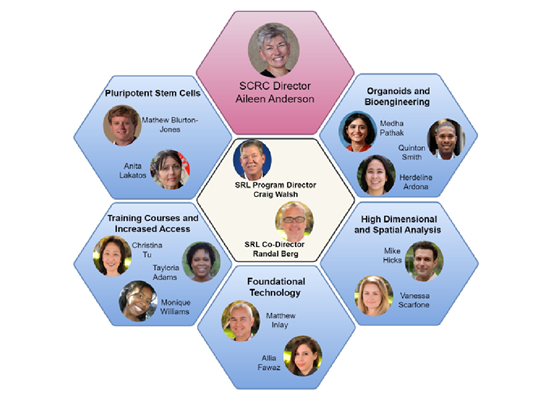

Technologies and SRL Core Services
The UCI CIRM SRL will offer four cores that will be available to stem cell researchers housed at UCI as well as to those from other research institutions in California. These cores include:
- 3D Bioengineering and Organoid Core (3BOC) for the use of cutting-edge methods (including bioprinting and high-throughput photopatterning using a PRIMO system) for the development of novel tissue engineered 2-D and 3-D in vitro human stem cell models. Bioengineering approaches, including micropatterning and 3D printing, are emerging to be crucial in stem cell biology as they provide several advantages that enhance reproducibility and throughput by controlling cell behavior, tissue mimicry, scalability, and integration of multiple cell types. For example, a 3D bioprinting of uveal melanoma cells extruded in defined patterns using a bioprinter is illustrated in the figure below.
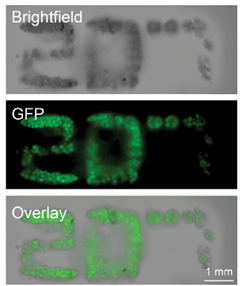
- iPSC/CRISPR Core for CRISPR targeting of human induced pluripotent stem cell (iPSC) and other cell lines as well as the generation and banking of a diverse set of human iPSC lines for CRISPR studies.
The figure below illustrates the ethnicity of control iPSC lines currently available through CIRMs biobank in comparison to the unique diversity of California’s population. We plan to generate iPSC lines and create CRISPR-I and CRISPR-A lines from male and female Hispanic individuals to begin to expand the diversity and utility of cell lines available to stem cell researchers across California.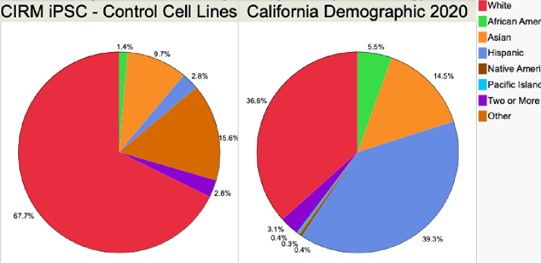
- High-Dimensional and Spatial Analysis (HDSA) Core Facility that offers imaging mass cytometry (IMC), CyTOF and spatial transcriptomics studies. The figure below provides an example of the Hyperion service, from panel design, to staining of sections, scanning on the Hyperion, and analysis on the Visiopharm platform. The analysis includes protein level expression and localization information of neuronal and immune populations in the mouse brain in an Alzheimer’s disease model. 6E10 is a marker for beta-amyloid plaques, which cannot be identified using transcriptomic approaches, and the interactions between specific immune cells and the plaques is key to dissecting neuroinflammation that occurs in AD.
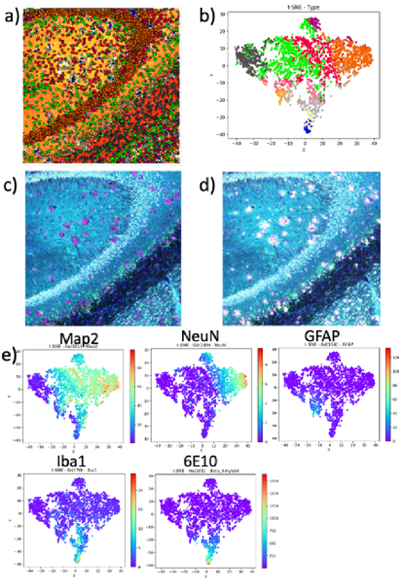
- Foundational Technology Core Facility that offers flow Cytometry, flow sorting, automated magnetic sorting, microscopy/imaging, tissue culture hoods, incubators, and equipment necessary for conducting stem cell modeling studies.



Cores working in Synergy
The four cores and training opportunities of the SRL will bring synergies through collaboration to develop pipelines for in vitro human stem cell modeling. The potential of this synergy is captured in the project illustrated in the figure below, in which brain organoids were developed using the bioengineering/organoid and iPSC/CRISPR cores, with analysis via the High-dimensional analysis core’s IMC, yielding novel insight not possible using more traditional approaches.
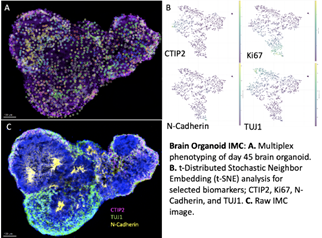
Please see below for more information on each of our available cores at the SCRC:
- Stem Cell Techniques training course
- Flow cytometry core and Mass Cytometry
- Imaging core
- Crispr core
- 3D Bioengineering and Organoid Core (coming soon)
Stem Cell Techniques Training Programs
Our SRL will continue to provide a two-week hands-on Stem Cell Techniques course (offered three times a year). This highly regarded course has been offered since 2007 and has trained over 400 students from a wide variety of institutions.
Complementing this very successful course are the following new training opportunities, which will be available to investigators both within and outside UCI starting in summer of 2025:
- 5-day Bioengineering/Bioprinting/Organoids Bootcamp
- Two-week course on CRISPR modification of human iPSC and embryonic stem cell cell lines
- 5-day intensive course on CyTOF/mass cytometry
- 5-day intensive course on imaging mass cytometry
For more information on CIRM, please visit https://www.cirm.ca.gov/.
For more information on CIRM SRL, please visit CIRM Collaboration Hub and the CIRM SRL Hub website (coming soon).
Applications for the new SRL training programs will open in 2025
The UCI CIRM SRL is supported by CIRM grant INFR6.2-15368
